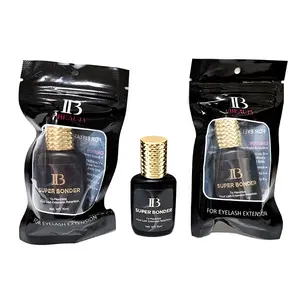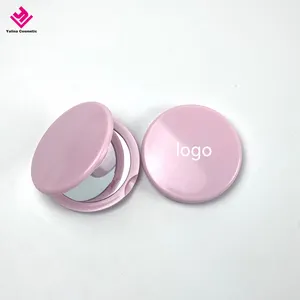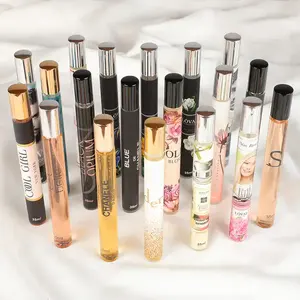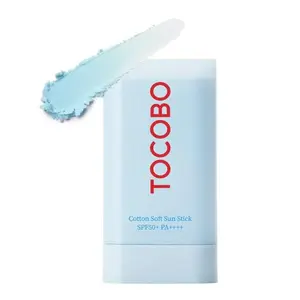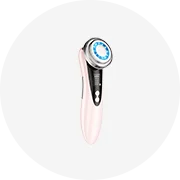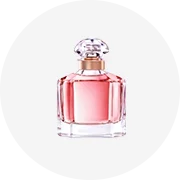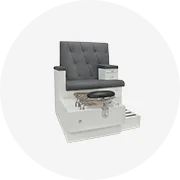Beliebt in Ihrer Branche






Good price piezo ultrasonic 200khz piezo cleaner transducer ultrasonic sensor
Sofort lieferbar
5,10 € - 13,90 €
Mindestbestellmenge: 1 Stück
Versand pro Stück: 30,72 €




40kHz Ultraschall wandler für Ultraschall-Schönheits instrument/Ultraschall reinigung
Sofort lieferbar
8,34 € - 10,65 €
Mindestbestellmenge: 1 Stück







Ultraschall wandler 28kHz Ultraschall vibrator 60W 28kHz piezo elektrischer Ultraschall oszillator für Ultraschall reinigungs bad
5,19 € - 5,65 €
Mindestbestellmenge: 1 Stück
Versand pro Stück: 15,73 €







China Hersteller 23k Diy Ultraschall wandler 100w Piezo elektrischer Ultraschall wandler
11,12 € - 13,43 €
Mindestbestellmenge: 1 Stück







Ultraschall reinigungs wandler 60W 40kHz Ultraschall reiniger Wandler Piezo elektrischer Ultraschall wandler
Sofort lieferbar
4,54 € - 5,28 €
Mindestbestellmenge: 1 Stück
Versand pro Stück: 15,73 €







HCCK 4-20 ma rs485 ultraschall-Tankstandssensor display ultraschall-Wasserstandssensor Sender Ultraschall-Sensor für Wasserhahn
125,02 € - 143,55 €
Mindestbestellmenge: 1 Stück
Versand pro Stück: 26,86 €







16mm mikroporöse piezo zerstäuber Ultraschall-luftbefeuchter Piezoelektrischen Wandler
0,3705 € - 1,86 €
Mindestbestellmenge: 1 Stück

OEM 1,7 MHz Zerstäuber Chip pflege Ultraschall zerstäubung piezo elektrischer Wandler für Luftbe feuchter
0,2593 € - 0,9261 €
Mindestbestellmenge: 100 Stück






5500 ml Pilz Luftbefeuchter Nebel Maker Gewächshaus Industrie Ultraschall Zerstäuber Wandler
Sofort lieferbar
101,87 € - 125,02 €
Mindestbestellmenge: 1 Stück
Versand pro Stück: 49,16 €






20mm 16mm 108-113 Piezo elektrischer Ultraschall zerstäuber Piezo keramik wandler für Nebul
0,3334 € - 0,6113 €
Mindestbestellmenge: 1 Stück






Ultraschall zerstäuber platte Piezo keramik zerstäubung wandler für Ultraschall nebeln ebel hersteller
1,86 €
Mindestbestellmenge: 10 Stück





Hochwertiges piezo keramisches piezo elektrisches Element für piezo elektrischen Ultraschall zerstäuber wandler
0,4631 € - 4,64 €
Mindestbestellmenge: 10 Stück
Versand pro Stück: 1,84 €
Ähnliche Suchanfrage:
luftbe feuchter piezo elektrischer wandlerultraschall-piezo-wandler luftbe feuchter1,7 mhz ultraschall zerstäuber wandler16mm ultraschall zerstäuber wandlerultraschall wandler zerstäuber fabrikultraschall-zerstäubung wandlerzerstäuber wandler herstellerultraschall-trompeten wandlerultraschall wandler für flüssigkeitenzoll ultraschall wandlerultraschall-horn wandlerwettbewerb ultraschall wandlerultraschall-verdampfer-wandlerclangsonic ultraschall wandleryuhuan clang sonic ultraschall wandler

Ginpertec 2.4 mhz 25mm piezo zerstäuber ultraschall zerstäubung wandler
0,9261 € - 14,82 €
Mindestbestellmenge: 100 Sätze






113 khz Ultraschall Piezoelektrischen Wandler für Micro Zerstäuber
9,27 € - 46,31 €
Mindestbestellmenge: 1000 Stück






ISSR OD20mm 2,4 MHz Ultraschall zerstäuber für Luftbe feuchter mit Leiterplatte treiber platine Ultraschall-Luftbefeuchter-Wandler
4,54 € - 6,49 €
Mindestbestellmenge: 5 Stück






16 mm 3-4um ultraschall piezoelektrischer Zerstäuber Piezo-Keramikschaltung für Nebulizer Nebelmaschine Luftbefeuchter
1,12 € - 2,32 €
Mindestbestellmenge: 10 Stück
Versand pro Stück: 7,65 €







Profession elle Herstellung Wandler Ultraschall piezo elektrische Keramik Scheiben Zerstäuber Piezo Wandler
7,32 €
Mindestbestellmenge: 10 Stück






Zerstäuber Ultraschall Piezo scheibe Keramik Piezo elektrischer Luftbe feuchter 20mm Wandler 16mm 1,7 MHz 2,4 MHz Mikro poröses Nebel element
0,2779 € - 0,5557 €
Mindestbestellmenge: 1000 Stück






Ultraschall reinigungs wandler 50kHz Gewebe reinigungs verne bler Zerstäuber Ultraschall misch zellen unterbrechung
24,64 € - 26,40 €
Mindestbestellmenge: 1 Stück
Versand pro Stück: 15,73 €






16mm 20mm 25mm Ultraschall zerstäuber Luftbe feuchter Zubehör Piezo keramischer Wandler
1,14 € - 1,30 €
Mindestbestellmenge: 100 Stück






Factory Hot Sale Piezo elektrischer Zerstäuber Ultraschall wandler für Luftbe feuchter Zubehör
1,11 € - 1,85 €
Mindestbestellmenge: 1 Stück






Ultraschall zerstäuber Wandler Ultraschall verne bler Teile
0,2593 € - 0,3705 €
Mindestbestellmenge: 1 Stück






Piezo ultraschall zerstäubung wandler ultraschall zerstäuber für luftbefeuchter unterstützung anpassung
0,8335 € - 1,39 €
Mindestbestellmenge: 1000 Stück






China Fabrik Versorgung Ultraschall Vernebler Luftbefeuchter Piezoelektrischen Wandler
Sofort lieferbar
37,05 €
Mindestbestellmenge: 10 Stück
Versand pro Stück: 0,1853 €






High power streifen platz piezo elektrische keramik platte zerstäuber piezoelektrischen wandler für ultraschall
0,2779 € - 5,01 €
Mindestbestellmenge: 5 Stück
Versand pro Stück: 6,54 €






Gartenteich Unterwasser Ultraschall Nebel Nebel gerät Ultraschall Luftbe feuchter Mit 1 Generator 1,7 MHz Wandler
Sofort lieferbar
125,02 € - 148,18 €
Mindestbestellmenge: 1 Stück
Versand pro Stück: 31,46 €






Piezo-Ultraschall zerstäubung sring wandler Ultraschall zerstäuber zur Anpassung der Luftbe feuchter unterstützung
Sofort lieferbar
1,12 € - 1,39 €
Mindestbestellmenge: 10 Stück
Versand pro Stück: 8,34 €






2021 dekorativer 4-Kopf-Ultraschallbefeuchter Fogger Mist Maker Ultraschall zerstäuber mit 360-W-Schaltwandler
39,83 € - 44,46 €
Mindestbestellmenge: 10 Sätze






Industrielle Immersions-Ultraschallreinigungs-Piezo wandler mit mehreren Spezifikationen
106,50 € - 1.250,20 €
Mindestbestellmenge: 1 Stück

Piezo keramik element für Luftbe feuchter 16mm 108KHz Ultraschall be feuchter Piezo elektrischer Wandler
0,5557 € - 1,39 €
Mindestbestellmenge: 100 Stück






10 Köpfe Ultraschall Nebel Maker Fogger Luftbe feuchter UND Wandler
Sofort lieferbar
64,83 € - 74,09 €
Mindestbestellmenge: 1 Stück
Versand pro Stück: 126,43 €






Sonderpreis Wasser pool Ultraschall zerstäuber Landschaft Künstlicher Nebel generator und Wandler 10 Köpfe
0,9261 €
Mindestbestellmenge: 10 Stück
Versand pro Stück: 8,34 €






Heißer verkauf landschaft ultraschall nebel maker 3 kopf wandler ultraschall fogger
32,42 € - 45,38 €
Mindestbestellmenge: 1 Stück






Zubehör/Teile für Aroma diffusoren mit ätherischen Ölen, piezo elektrischer Piezokeramik-Wandler zerstäuber mit Ultraschall be feuchter
0,2316 € - 0,9261 €
Mindestbestellmenge: 1000 Stück





Ultraschall piezoelektrischen wandler hersteller liefern PZT piezo ceramic disc von 1,7 MHz/2,4 MHz/3 MHz, dia 16mm/20mm/25mm/28mm
4,64 €
Mindestbestellmenge: 10 Stück






Ultraschall Piezo Sensor Luftbe feuchter Keramik Verne bler Mist Maker Wandler Zubehör 1,70 MHz D25mm 25mm
Sofort lieferbar
0,4631 € - 0,7409 €
Mindestbestellmenge: 10 Stück
Versand pro Stück: 0,5742 €



2.4mhz OD20mm Ultrasonic zerstäubung wandler HAINERTEC BRAND
Sofort lieferbar
9,17 €
Mindestbestellmenge: 20 Sätze
Versand pro Stück: 1,23 €






Taidacent Home Luftbe feuchter Keramik Zerstäubung sfilm Wandler Film Oszillierende Scheibe Piezo Film Durchmesser 25mm Ultraschall Zerstäuber
Sofort lieferbar
0,5279 € - 0,5742 €
Mindestbestellmenge: 100 Stück
Versand pro Stück: 0,9354 €






Atomizer Fogger Spray Industrial Air Humidifier
Sofort lieferbar
78,72 € - 138,92 €
Mindestbestellmenge: 1 Stück
Versand pro Stück: 47,18 €
Top-Kategorien
Über ultraschall-zerstäuber wandler
Alibaba.com bietet 743 ultraschall-zerstäuber wandler Produkte an. Eine Vielzahl von ultraschall-zerstäuber wandler-Optionen stehen Ihnen zur Verfügung, wie z. B. keramik, piezoelektrischen keramik, und pzt. Sie können auch zwischen weiß, ultraschall-zerstäuber wandler wählen.
